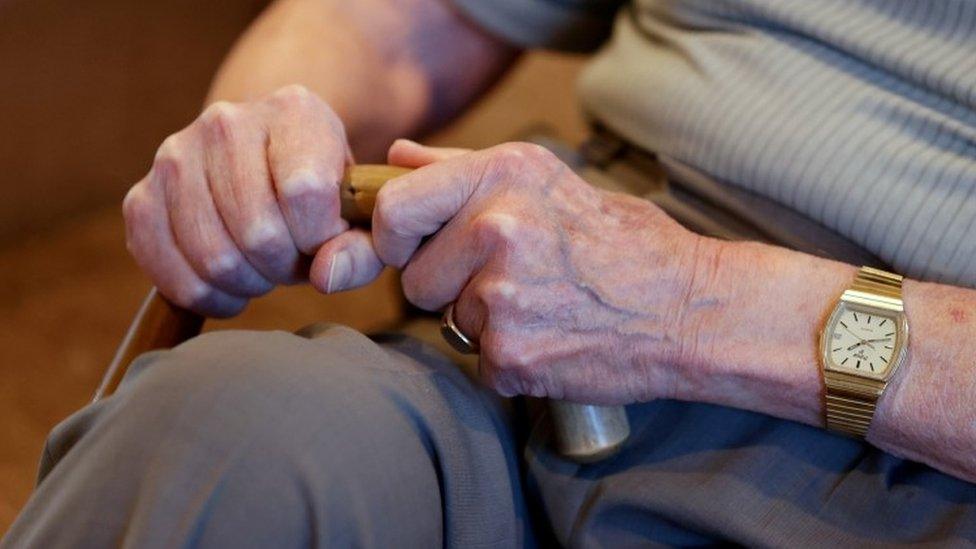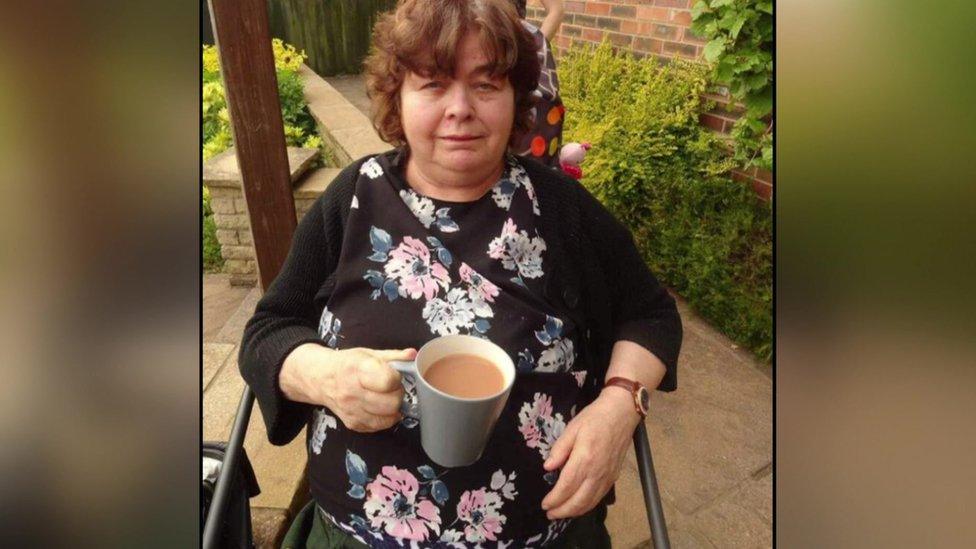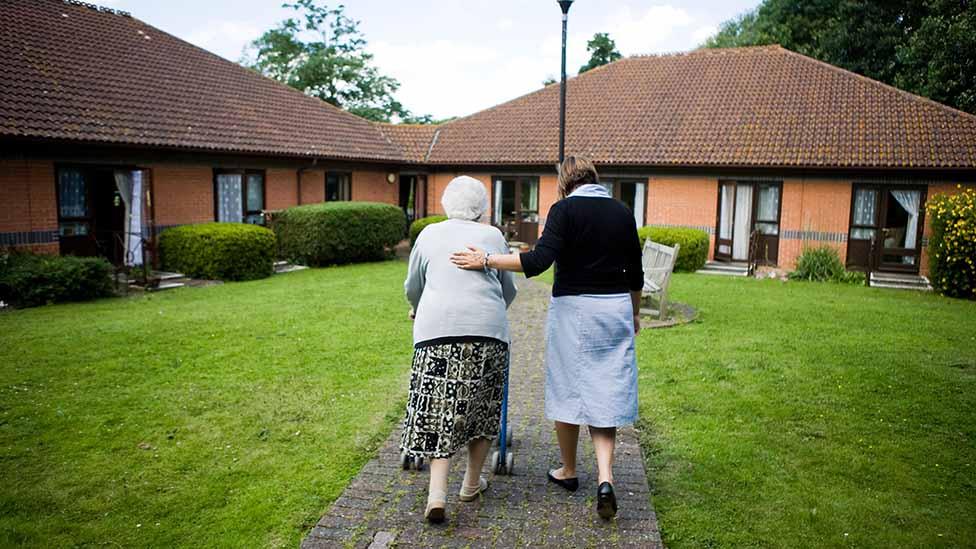Coronavirus: Hard to prevent care home deaths, says Chris Whitty
- Published

Coronavirus is likely to result in a high mortality rate in care homes, England's chief medical officer has said.
Chris Whitty said it was hard to prevent deaths in care homes "sadly because this is a very vulnerable group".
Current statistics were likely to be an "underestimate", he added.
It came as new figures suggested deaths have increased significantly in recent days.
The Office for National Statistics (ONS) said on Tuesday 1,000 people died in care homes in the week to 10 April.
But now the health regulator said the five days after that could have seen another 1,000 deaths.
Asked about the figures at the daily Downing Street press conference, Mr Whitty said: "In care homes, what we have is a large number of people of the most vulnerable age for this virus."
When it was possible to "look back over this epidemic", he added, "I'm sure we will see a high mortality rate in care homes sadly because this is a very vulnerable group and people are coming in and out of care homes and that cannot, to some extent, be prevented."
The Department of Health has said it also feared a "significant rise" in deaths not related to coronavirus among residents.
Paying tribute
The ONS data released on Tuesday showed there had been 1,043 people linked to Covid 19 in England and Wales - with nearly 1,000 of those in English care homes.
The Care Quality Commission (CQC), which regulates care homes in England, has now produced preliminary data for April 11-15, they suggest there were 1,000 further deaths linked to Covid-19.
They also say there may be a significant increase in non-Covid deaths - in line with what the ONS official statistics suggest.
Those figures are expected to be published on April 28, once they have been verified.

One family's experience

Christine Mullin's family are asking whether she was well enough protected
Christine Mullin contracted coronavirus in a care home but was subsequently moved to hospital, where she died.
The 78-year old's death will therefore be reflected in NHS figures.
Her daughter Charlotte said she had "the start of dementia," but was not "severely disabled".
She told the BBC the elderly were identified "from the beginning" as a vulnerable group and should have been an "immediate" priority in efforts to stop the virus spreading.
For her family - like many others - the central question is whether vulnerable residents have been well enough protected.

The notifications from care providers may include some people who died in hospital. As these deaths are already reflected in NHS figures, the numbers collected by the CQC have to be adjusted and checked.
Care providers have always had to notify the CQC when a resident dies.
But the forms have now been adjusted to collect information on whether a death is linked to coronavirus.
The reporting mechanism is different from that used by hospitals and the data can take longer to pull together, because there are far more care homes than hospitals.
The death toll in UK hospitals has now risen in the last 24 hours by 759 to 18,100.
Health Secretary Matt Hancock announced that 15 social care workers had died in the pandemic.

A SIMPLE GUIDE: How do I protect myself?
AVOIDING CONTACT: The rules on self-isolation and exercise
HOPE AND LOSS: Your coronavirus stories
LOOK-UP TOOL: Check cases in your area

He told MPs earlier: "In the same way that we pay tribute to and we remember all of those NHS staff who have died, so too we do for those who serve our country and look after people in social care."
The daily death figures from UK hospitals have been one of the main statistics used by the government to track the progress of the pandemic.
The government has always been clear that it does not include people who die in care homes or in their own homes.
But Mr Hancock warned against comparing the different figures to make conclusions about the overall death toll, saying they were compiled on different time frames and needed "rigorous analysis" to ensure the comparison was accurate.

Doubling in five days sounds terrifying, but that is the story of the epidemic.
The number of deaths announced for the UK as a whole was doubling every three days up to the week before Easter.
After that, it slowed down to doubling every week before growth eventually stalled.
So this trend for care homes from a week ago is not very different to ones we have seen elsewhere.
Their new data is preliminary and we should be careful about comparing the first week of their data to ONS figures from the preceding week.
But the big issue has been about knowing what's happening in care homes now: has growth in deaths stalled there too or are they continuing to climb?
The other data sources we use don't have the answer. Those daily figures from DHSC mainly cover deaths in hospitals, so miss most care home deaths.
The complete figures based on death certificates that capture care homes take over a week to be collated and analysed.
The Care Quality Commission are notified of every death of a care home resident, so can give a fuller picture.
But when they are included in official figures, it will give us critical information about a group of people who are among the most vulnerable to the coronavirus.

It comes as the government faces increasing pressure to address a shortage of personal protective equipment (PPE) for care home workers, amid reports of staff, or their employers, having to pay inflated prices for masks and gowns.
Labour former cabinet minister Lord Hain said: "The government needs urgently to give billions more to care homes instead of leaving them so badly in the lurch during this crisis."
Acting Liberal Democrat leader Sir Ed Davey told the BBC the CQC figures were "alarming" and accused the government of being "very slow in responding".
"We are now seeing what appears to be a huge number of deaths," he added, and he called on the government to "get it's act together".
- Published15 May 2020
